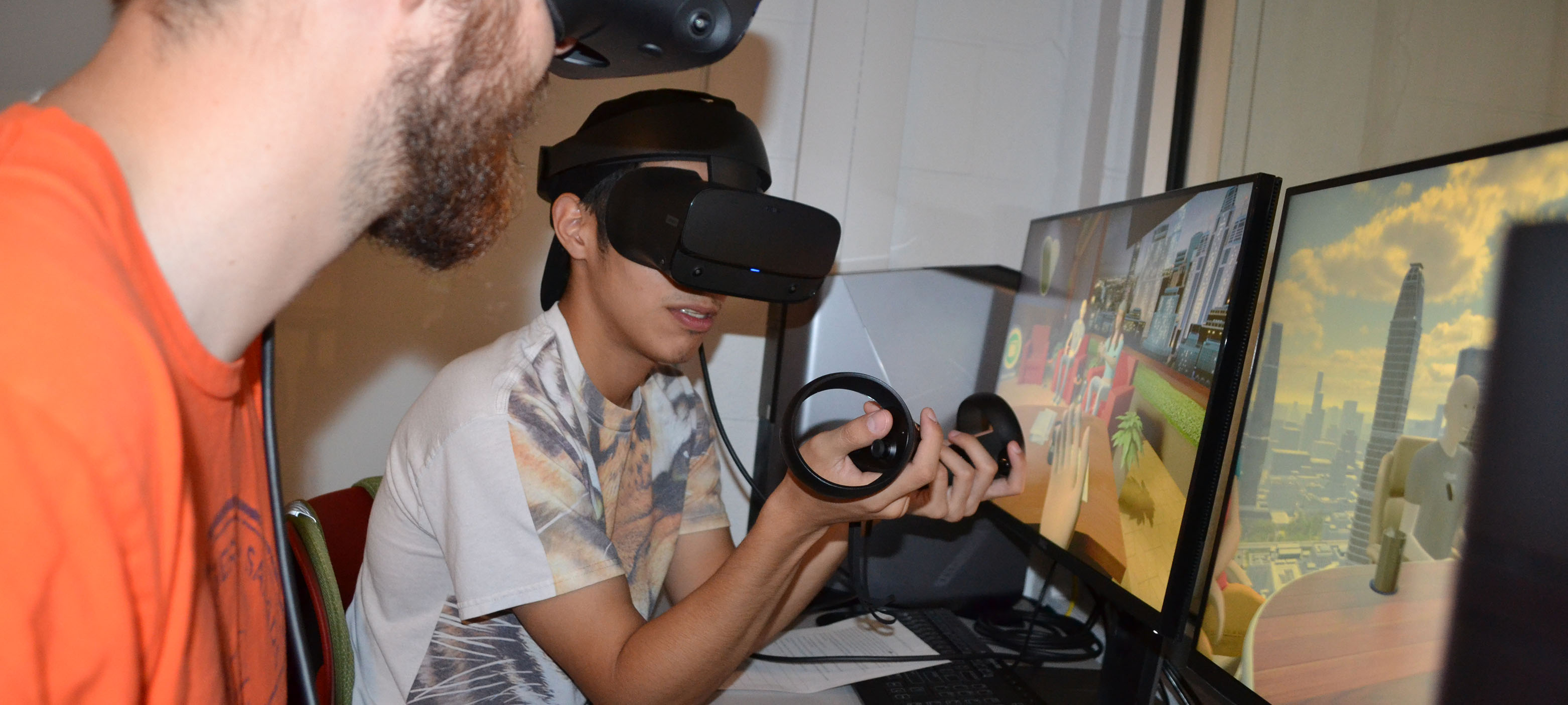
During the French 205 Virtual Reality Learning, French 205 students interact while using VR to communicate French orally.
I-STEM Goals
1: Foster STEM Citizenship Through STEM Communication & Public Engagement.

STEAM Studio 2019 students design a water filtration system.
Cultivate sustained, coordinated partnerships to engage the public in STEM experiences early and consistently, involving university faculty and students to help meet STEM education challenges. An informed citizen should have the ability to apply critical-thinking skills needed to understand complex, STEM-related issues, to develop his or her own views, and to act accordingly. Disseminate information about STEM Education Initiatives.
Resources by Targeted Audiences:
P-16 Resources: Cultivate sustained, coordinated preschool through undergraduate partnerships to engage students in STEM experiences early and consistently, involving university faculty and students to meet STEM education challenges.
Teacher Development Resources: Revitalize STEM teacher preservice education, induction, and professional development programs that attract and prepare a diverse group of P–16 STEM teachers and promote their effectiveness, retention, lifelong learning, and continued involvement in research.
2: Foster Undergraduate and Graduate STEM Education Reform.
Stimulate accessible, engaging, undergraduate and graduate STEM programs and research experiences to promote interest and success in STEM fields, including teaching, for diverse students.
Undergrad/Grad STEM Ed Reform Resources
3: Advocate for STEM Education Innovation; Disseminate Evaluation Information.
Serve as advocates for STEM education in the state and the nation, such as at national conferences. Disseminate results regarding STEM Education evaluations.